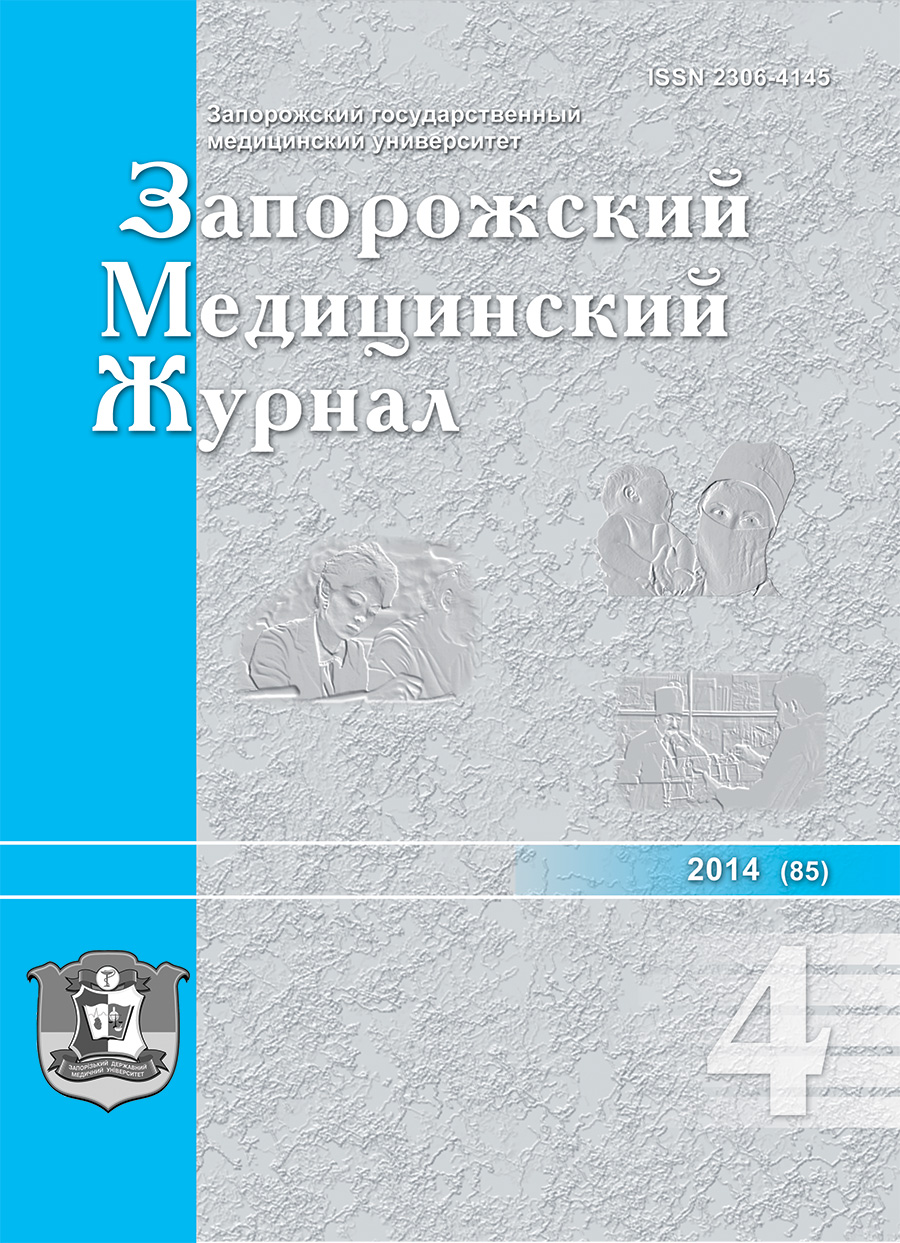Risk factors of dental disease in working age population of a large industrial city
DOI:
https://doi.org/10.14739/2310-1210.2014.4.27400Keywords:
Risk Factors, Somatognathic Diseases, Age GroupsAbstract
Back in 2005, the WHO has identified European targets by 2020, that provide specific measures for improving dental health and define clear rates of intensity and prevalence of dental diseases. Most EU countries that adopted the WHO recommended principles have already achieved the goals regarding dental health. Level of diseases of the teeth and oral cavity among the population of Ukraine is higher than in the EU countries. Consistently high prevalence of dental diseases among population of all age groups, especially prevalence of dental caries, which is confirmed by the results of various epidemiological studies is a cause of concern. Nowadays factors that influence occurrence of the teeth and oral cavity diseases among the working age population of a large industrial city are not enough studied.
The aim of the study was to determine the factors leading to the worsening of the working age population of the large industrial city dental health. To establish the risk factors was developed a special closed-type questionnaire, careful attention in which was paid to personal oral hygiene.
Methods and results.The most influential factors leading to the increase of the Green - Vermilon index are personal oral hygiene factors and lifestyle of the individual: brushing teeth less than 2 times a day (odds ratio OR=2,64, 95% СІ: 0,97-7,14; р<0,05); smoking (odds ratio OR=2,07, 95% СІ: 0,78-5,53; р<0,05); alcohol intake 1-2 times a week and more often (odds ratio OR=1,82, 95% СІ: 0,61-5,42; р<0,05) lead to increased chances of a low level of oral hygiene.
The level of oral hygiene is also affected by the socio-economic factors: higher education in 1.9 times decreases chances of a low level of oral hygiene (odds ratio OR=1,88, 95% СІ: 0,68-5,22; р<0,05); income at subsistence level and below (odds ratio OR=1,20, 95% СІ: 0,45-3,19; р<0,05).
According to our research, level of oral hygiene is also influenced by medical and organizational factors: choice of toothpaste with doctor’s aid (odds ratio OR=1,77, 95% СІ: 0,67-4,69; р<0,05); changing of toothbrush every 3 months (odds ratio OR=2,14, 95% СІ: 0,77-5,93; р<0,05), about whout the physician should inform population.
Visiting the dentist therapist once every 6 months in 1.5 times reduces the chances of a low level of oral hygiene (odds ratio OR=1,52, 95% СІ: 0,45-5,16; р<0,05), and visiting the dentist for preventive treatment (preventive hygiene) almost 4 times reduces the chances of a low level of oral hygiene (odds ratio OR=3,97, 95% СІ: 0,84-18,76; р<0,05). As a result, visiting of a constant dentist 5 times reduces the chances of a low level of oral hygiene (odds ratio OR=5,07, 95% СІ: 1,54-16,62; р<0,05).
The study of factors that lead to increase in the intensity of caries (DMF index) proved, that the most influential factor is the reason for seeking dental help: seeking medical help because of acute pain and unscheduled visit, leads to the increased chances of DMF index growth in 7 times (odds ratio OR=6,77, 95% СІ: 1,75-26,19; р<0,05), while visiting one constant dentist 2 times reduces the chances of growth of the DMF index (odds ratio OR=1,86, 95% СІ: 0,63-5,49; р<0,05). Also, we have proved that on the chances of DMF index increase influence the availability of dental care (odds ratio OR=2,53, 95% СІ: 0,86-7,47; р<0,05) and economic situation of the population – presence of income at subsistence level and below (odds ratio OR=2,20, 95% СІ: 0,78-6,22; р<0,05).
Smoking and tooth brushing less than 2 times a day are less influential on the intensity of caries compared with the level of oral hygiene.
Conclusion. All mentioned above demands to make adjustments to the system of providing dental care to the population. Regulations of the organization and management of dental care are obsolete in current conditions and do not allow to implement the necessary management and treatment and preventive measures.
References
Kiseleva, E. A., Te, I. A., & Te, E. A. (2009). Analiticheskaya e`pidemiologiya osnovnykh stomatologicheskikh zabolevaniy v krupnom promyshlennom regione Zapadnoy Sibiri [Analytic epidemiology of main dental disease in large industrial region at West Siberian]. Institut stomatologii, 3(44), 22–23. [in Russian].
Kosenko, K. M., & Reizvіkh, O. E. (2012). Aktualnі pytannia stanu ta perspektyvy rozvytku stomatologіchnoi dopomohi sіlskomu naselenniu [Current issues of the status and prospects of dental care to the rural population] Vіsnyk stomatolohii, 4, 106–110. [in Ukrainian].
Leus, P. A. (2007). Karies zubov. E`tiologiya, patogenez, epidemiologiya, klassifikaciya [Caries. Etiology, pathogenesis, epidemiology, classification]. Minsk: BGMU. [in Belarus].
Leus, P. A. (2005). Stomatologiya Belarusi XXI vek [Dental Belarus XXI Century]. Stomatologicheskij zhurnal, 4, 2–5. [in Russian].
Pashaev, A. Ch. (2009). Urazhenіst naselennia Azerbaidzhanu zakhvoriuvanniamy parodontu. Sovremennaya stomatologiya, 2, 48–50. [in Ukrainian].
Tupikova, L. N., & Onopa, E. N. (2002). Otnoshenie k stomatologicheskomu zdorov'yu razlichnykh grupp naseleniya. Institut stomatologii, 3, 17–18. [in Russian].
Downloads
How to Cite
Issue
Section
License
Authors who publish with this journal agree to the following terms:
Authors retain copyright and grant the journal right of first publication with the work simultaneously licensed under a Creative Commons Attribution License that allows others to share the work with an acknowledgement of the work's authorship and initial publication in this journal. 

